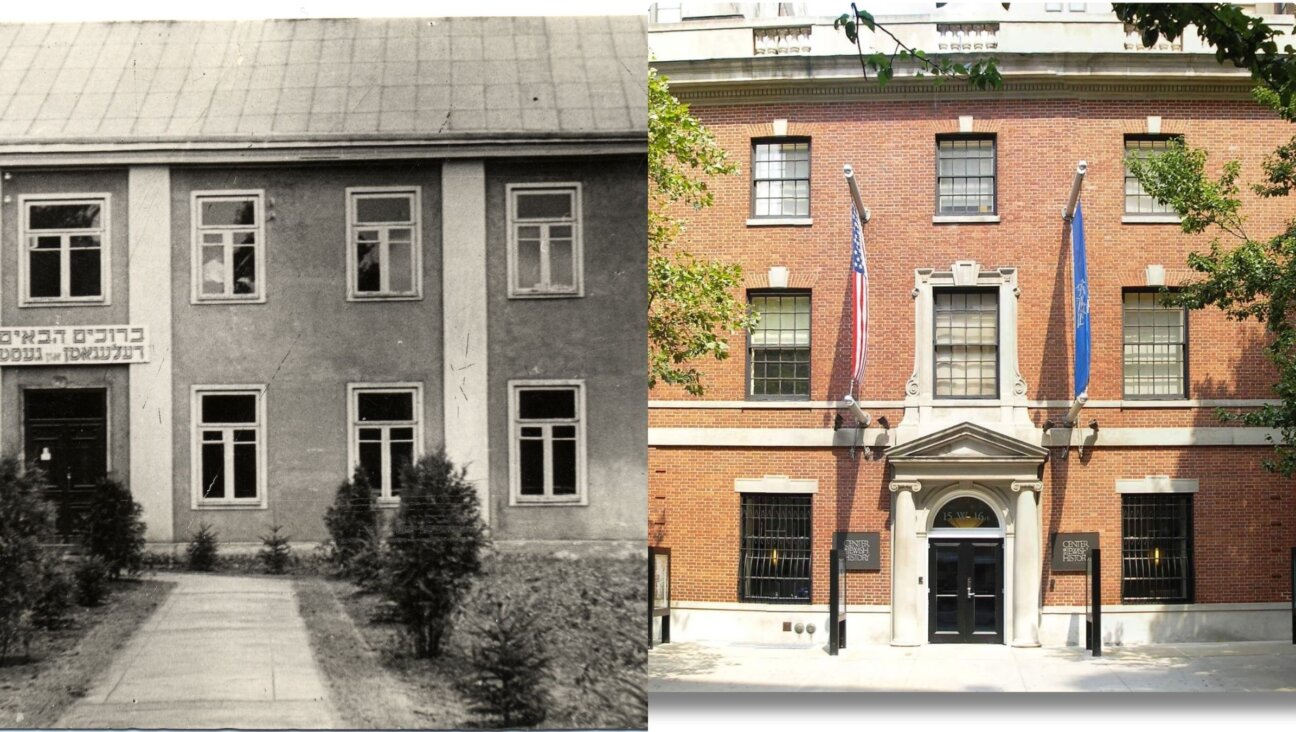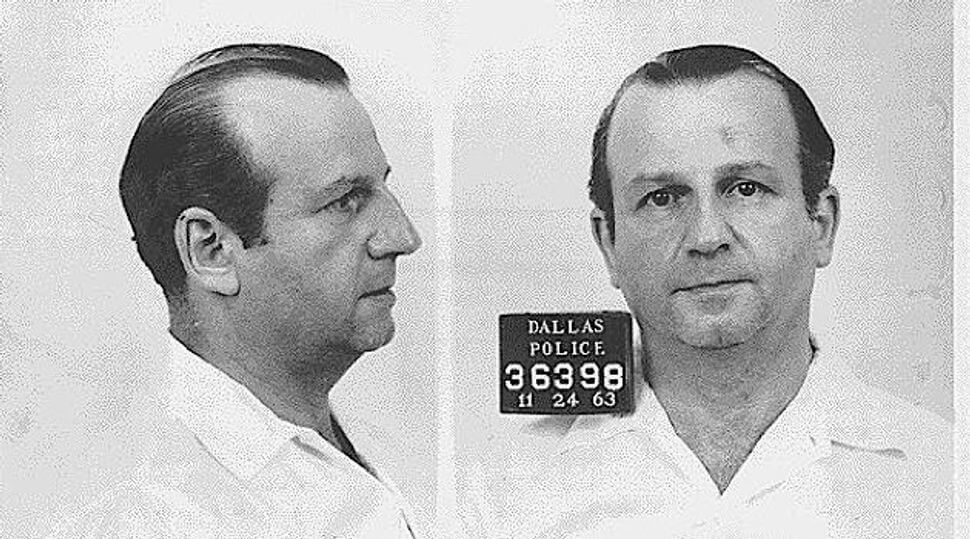The Life (and Death and Life) Of the Rebbe


Menachem Mendel Schneerson (1902- 1994): He became the Lubavitcher Rebbe in 1951. Image by WIKI COMMONS; MONTAGE KURT HOFFMAN
The Rebbe: The Life and Afterlife of Menachem Mendel Schneerson
By Samuel Heilman and Menachem Friedman
Princeton University Press, 382 Pages, 29.95
Most Jewish New Yorkers vividly remember the Crown Heights riots of August 1991, four horrendous days of attacks on Brooklyn’s Hasidic Jews that resulted in the brutal murder of Yaakov Rosenbaum, a young Chabad scholar from Australia. The riots were denounced as a pogrom — the first ever in the United States — by former mayor Ed Koch and then mayoral hopeful Rudy Giuliani, and were subsequently classified by historian Edward Shapiro, in his book on the riots, as the “worst anti-Semitic episode in American Jewish history.” However, what far fewer people remember about those infamous events is the particular incident that triggered the riots.

King of Queens: In Brooklyn in life and in Queens in death, the Rebbe commands intense devotion. Image by GETTY IMAGES
An out-of-control vehicle driven by a Chabad Hasid accidentally killed a five-year-old black child, Gavin Cato. That vehicle was part of the speeding three-car motorcade that, along with a police escort, regularly escorted the late Lubavitcher Rebbe, Menachem Mendel Schneerson, from Brooklyn to Queens to visit the grave of his father-in-law, Yosef Yitzchak Schneerson, whom the Chabad Hasidim to this day tellingly dub “der frierdiger rebbe,” the previous Rebbe, with whom he regularly “communed.”
In their lively and provocative new book, “The Rebbe: The Life and Afterlife of Menachem Mendel Schneerson,” respected scholars Samuel Heilman and Menachem Friedman depict those inspirational cemetery visits, during which Schneerson clairvoyantly sought counsel from his predecessor, as a central feature of the Rebbe’s leadership when addressing problems whose resolution eluded even him. Schneerson, who had become “possessed,” after the Holocaust, by the belief that the frierdiger rebbe would not die before ushering in the messianic era, taught that he had not really died in the conventional sense and regularly told his followers that his presence was still active among them. The trips to the Queens graveyard to seek counsel from his predecessor were, indeed, the Rebbe’s only departures from his Brooklyn base over the many decades of his leadership of Chabad. In a particularly rich chapter, entitled “Death and Resurrection,” the authors document the pathos, frequency and centrality of this manner of religious leadership, one that has not only outlived Schneerson, but has taken on a life of its own (so to speak) since his death.
As the book notes, when the passing of his wife, Moussia, in 1988, plunged Schneerson into a life of profound personal isolation, those visitations became increasingly frequent. By that time, the Rebbe had thousands of worshipful followers, but not a single confidant. In the authors’ stark depiction, “There he remained, the man who was to lead the generation to redemption, all alone in the world inside his house, bereft of the last person for whom he was not just a Rebbe.”

His own failing health and desire to usher in the messianic age added to the urgency of these visits. And so — when not urging his Hasidim to chant feverishly what had become the Chabad anthem, “We want Moshiach now, we don’t want to wait” — he spent more and more hours in isolation inside the frierdiger rebbe’s mausoleum.
One of the central themes in this eye-opening account of the Rebbe’s “life and afterlife,” alluded to in the book’s subtitle, is precisely the blurring of the borders between this living world and the imagined next one — a confusion rendered all the more urgent after the Rebbe himself was silenced by a massive stroke on March 2,1992. It was an avertable tragedy that occurred, ironically enough, while he was isolated inside the frierdiger rebbe’s tomb for almost three hours. His disciples waited outside long after he audibly collapsed, afraid to disturb his séance with the dead.
The dissonance between this life and the next became positively desperate over the next two years, until his death on June 12, 1994, following a long hospitalization. After that June, the confusion became something far more extreme: the denial of Schneerson’s death and, in some circles, his deification.
In an interview conducted on Israeli television shortly before the Rebbe suffered the debilitating stroke, the towering Orthodox Israeli philosopher, Yeshayahu Leibowitz, was asked what he thought of the Rebbe’s messianism. Leibowitz’s response was characteristically comical and icy:
There is only thing that I cannot figure out about this man [Schneerson], and that is whether he is a psychopath or a charlatan. This is the only thing I just cannot decide. But this kind of degeneracy, of phony prophets and false messiahs, is as ancient as Israel itself.
That Schneerson was no charlatan has since been proven beyond any doubt by the recent scholarship of Tomer Persico and Elliot Wolfson, who leave no question about the Rebbe’s complete conviction that he was the Messiah. While the imminence of the final redemption had been a key point in all of the Rebbe’s “sichos,” or talks, since he took on the mantle of rebbe in 1950, Heilman and Friedman extensively document the messianic obsession that became the leitmotif of his teachings, beginning in the early 1980s and culminating in the Rebbe’s announcement at the beginning of the Hebrew year 5752 that this would be the year of the Messiah’s revelation:
This would be the year, the Rebbe promised, that “the world would become united under the flag of the Messiah, and all would be repaired.” His Hasidim had prepared just such a flag on which a black crown on a yellow background hovered over the Hebrew word ‘Moshiach.’
The Rebbe had often told his followers, “There can be no King without a nation that will crown him.” His “nation,” the Hasidim therefore now crowned him in what would become a series of such events. On Saturday night, January 4th 1992, a panel of Lubavitcher Rabbis at 770 [Eastern Parkway, Chabad-Lubavitch World Headquarters] thrashed out the matter of the Messiah’s arrival and concluded with public cries of “Long Live the King Moshiach.” They beamed their meeting by satellite around the world.
As a result of this conclusion, tens of thousands of Chabad Hasidim are now re-enacting the relationship Schneerson had with his deceased father-in-law, verging into the realm of the idolatrous. In the absence of an heir to Schneerson (how, after all, does one “replace” the Messiah, without admitting his failure?), using an assortment of supernatural techniques — such as treating the Rebbe’s writings and videos as tarot cards, and communing with him during visits to his grave, right next to that of the frierdiger rebbe — they are receiving spiritual advice from a dead man, for whom they chant, “Long live our Teacher and Master, the King Messiah, forever and ever.”
“The Rebbe” is by no means an exhaustive biography and is not destined to be the definitive work on its fascinating subject; too much of Chabad’s social and political history under Schneerson’s leadership is missing. But it is, to date, the best analytical study of the two major themes that it addresses: A critical and often boldly psychological biography of Schneerson is prefaced and supplemented by two chapters devoted to a sociological analysis of the beliefs and behaviors of his Hasidim, especially after the death of the man they were — and most still are — convinced was the Messiah. (The authors’ interviews and research make clear that there remain two main positions found among the Lubavitchers: those who admit their messianism openly and those who camouflage it.)
The book begins and ends with short chapters about the Chabadniks today and their responses to the Rebbe’s death. Most of the book, though, is a chronological biography, from birth to death, in six chapters, each dedicated to a distinct phase of the Rebbe’s life.
The most revelatory chapters are bound to generate controversy, especially among the Lubavitchers and their sympathizers. These describe Schneerson’s early life, before he was appointed Rebbe and ultimately anointed “The King Messiah.”
Heilman and Friedman’s riveting presentation of Menachem and Moussia Schneerson’s youthful lives in Berlin and Paris of the 1930s is filled with surprises. It depicts a youthful couple, both of distinguished Hasidic ancestry, who seemed intent on forging a new path for themselves as cosmopolitan, modern Europeans, maintaining a baseline Orthodox lifestyle but with very little connection with the mainstream Chabad community. This was especially true of Moussia, the frierdiger rebbe’s daughter, who to the very end of her life refused to refer to herself as a rebbetsin, preferring to be known as “Mrs. Schneerson of President Street.”
Neither in Berlin nor Paris did the Schneersons live in Jewish neighborhoods. Indeed, in Paris they resided at the fashionable Hotel Max, on the Left Bank, whose other tenants were a rich international assortment of bohemian artists, musicians and writers. In neither city was Schneerson ever seen in a synagogue, and there is no evidence of his involvement with their small Hasidic communities. The authors document Schneerson’s focused commitment to his study of engineering and, in contrast with later years, sporadic contact with his father-in-law.
Contrary to his own father’s pleas, Schneerson trimmed his beard, wore modern rather than Hasidic clothing and socialized mainly with his brother Leibel, a Trotskyite who had completely abandoned Orthodox Jewish observance, and brother-in-law, the beardless cosmopolitan, Mendel Horensztein, who evinced no interest in his Hasidic lineage or its traditions.
Tragically, all dreams of becoming part of cosmopolitan Paris were crushed by the Nazi invasion of France and the urgent need to escape Europe. The most telling detail of the book’s vivid narration of the frenzied efforts to rescue the Schneersons on the part of Chabad Hasidim in America is that all efforts to obtain a special clergy-exemption visa for Schneerson, to exclude him from the restrictive U.S. quotas on Jewish war refugees, were rejected by the State Department.
He was identified as an engineer on his visa application; he had never studied in any yeshiva and was not formally ordained as a rabbi; moreover he had not a single day of documented work experience as a rabbi. This did not deter the Lubavitchers in America from trying, and failing, to convince Henry Butler, the attorney handling the Schneersons’ emigration case, “that the man who had identified himself as an engineer on his visa application was truly a rabbi.”
Heilman and Friedman work using methods established by Max Weber (“The Sociology of Religion”) and Erik Erikson (“Young Man Luther”) in trying to reconstruct the rebbe’s inner thoughts during this turbulent period; and yet not all of their conclusions will convince all readers, especially the Chabad faithful. Still, they vividly depict the drama of Schneerson’s transition from Paris to Brooklyn:
As he reflected on his situation, he could not help but realize that his plans to settle in Paris, become a French citizen and live as a Jew of Hasidic background pursuing a career in engineering were now in shambles. Moussia, too, who would forever look back on her years in Paris as her happiest and freest, as she often told friends, realized those days were over.
The powerful psychological and spiritual processes that took place within Schneerson’s psyche over the next decade — not least the trauma of the Holocaust — transformed him from an aspiring Parisian engineer to the most famous, influential and controversial Hasidic rebbe in Jewish history, one who became possessed of the belief that he would usher in the messianic age. These processes are not adequately explored by Heilman and Friedman, a lacuna that is this otherwise excellent book’s greatest weakness.
But the authors do document the lasting effects of Schneerson’s enduring posthumous charisma on his thousands of disciples, especially the shluchim, or messengers, who are to be found facilitating the practice of Judaism in virtually every place on earth where Jews are to be found. The finest aspect of Schneerson’s lasting legacy is their good work, which stands on its own merits with or without the delusional messianism.
Allan Nadler, a regular Forward contributor, is Professor of Religious Studies and Director of the Jewish Studies Program at Drew University.
A message from our Publisher & CEO Rachel Fishman Feddersen

I hope you appreciated this article. Before you go, I’d like to ask you to please support the Forward.
At a time when other newsrooms are closing or cutting back, the Forward has removed its paywall and invested additional resources to report on the ground from Israel and around the U.S. on the impact of the war, rising antisemitism and polarized discourse.
Readers like you make it all possible. We’ve started our Passover Fundraising Drive, and we need 1,800 readers like you to step up to support the Forward by April 21. Members of the Forward board are even matching the first 1,000 gifts, up to $70,000.
This is a great time to support independent Jewish journalism, because every dollar goes twice as far.
— Rachel Fishman Feddersen, Publisher and CEO





















